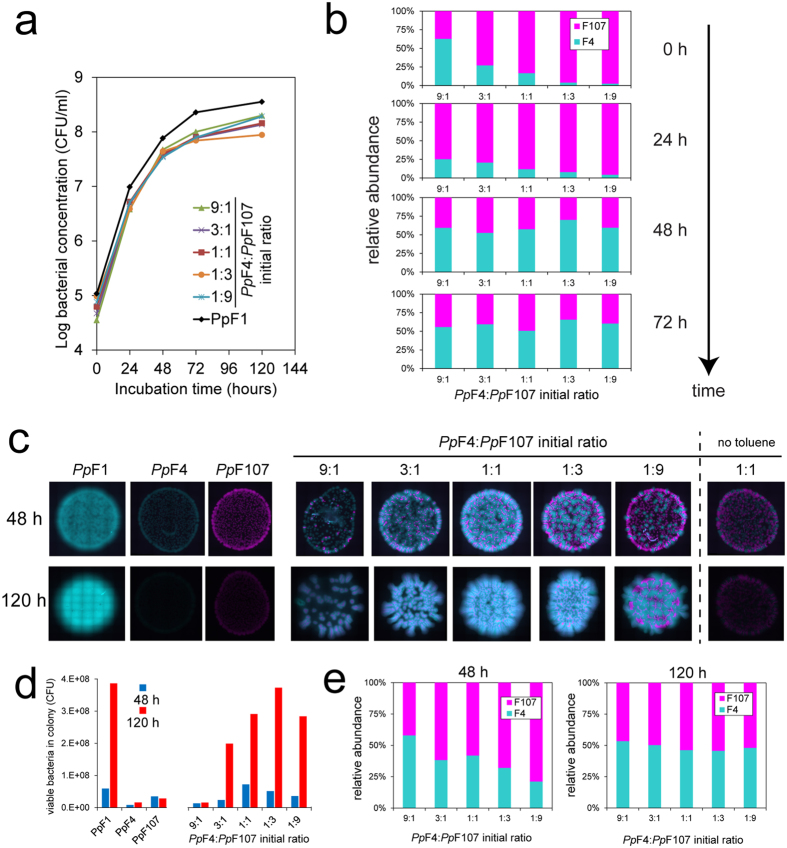Figure 4.
Growth and relative abundance of strains in toluene-degrading consortium in liquid cultures (a,b) and on solid media (c–e). (a) Growth of cocultures of PpF4 and PpF107 with various initial ratios (based on optical density measurements), with gaseous toluene as sole carbon source. Bacterial concentration is expressed as colony-forming units (CFU) per ml of medium. (b) Relative abundance of cross-feeding strains in liquid cultures at different incubation times, calculated from CFU counts. PpF4:PpF107 ratio converges over time to approximately 1:1, irrespective of the initial strains ratio. The discrepancy between PpF4:PpF107 ratios based on optical density and CFU counts at 0 h is due to variation in cell morphology between the two strains grown in precultures (see Supplementary Fig. S8), which results in different OD to CFU relationships for PpF4 and PpF107. (c) Colony growth of monocultures of strain PpF1 (wildtype) and mono- and cocultures of strains PpF4 and PpF107 exposed to gaseous toluene on agar plates. Droplets (1 μl) of cells suspensions with OD600 adjusted to 0.01 were pipetted onto the agar surface (corresponding to ≈1,000 cells). PpF1 and PpF4 are tagged with eGFP (shown as pseudo-color cyan) and PpF107 with mCherry (shown as pseudo-color magenta). Note that colonies shown after 48 h and 120 h are not the same, and are not shown to scale. At the end of the incubation period (48 h or 120 h), the colonies shown in (c) were cut out of the agar plate and cells were resuspended in buffer solution. Viable counts (d) and relative abundances (e) of both strains were obtained by plating on LB agar. (b,e) demonstrated that the relative abundance of each partner in the toluene-fed PpF4:PpF107 consortium converged to 50% over time regardless of initial strain ratio or of final population size. This suggested that the two strains grew eventually at the same rate, which is a consequence of obligatory mutualism.

